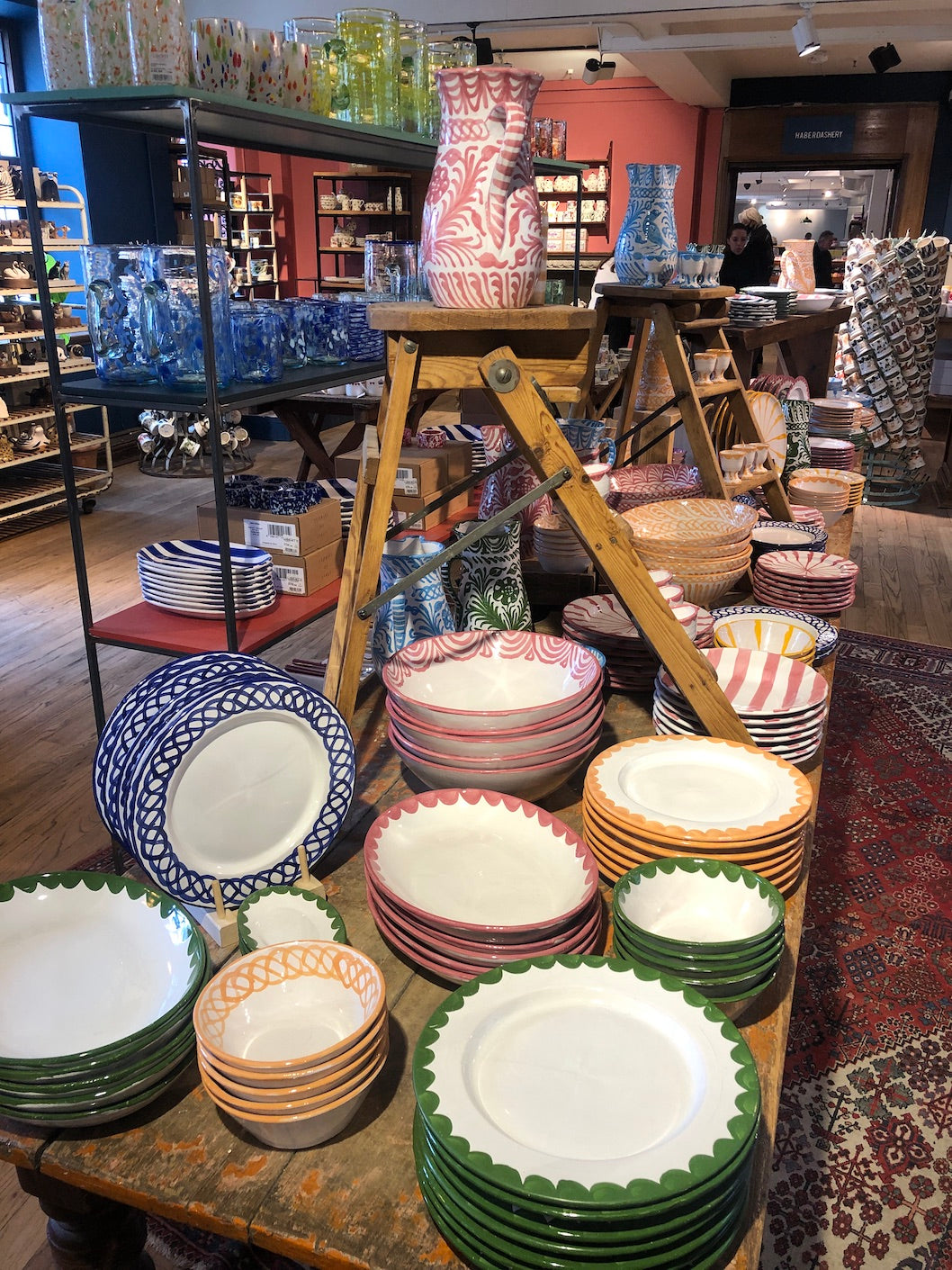Cerámica Delacava, makers of iconic, white-dipped tableware
Two hours-drive west of Madrid, tucked into the foothills of the Sierra de Gredos, is Cerámica Delacava. The studio is home to ceramicists Emma and César, who create stunning, rustic ceramics in one of the most beautiful corners of Spain.
Having seen the love and talent that goes into making each piece, and experienced the warmth of their welcome, we wanted to introduce you to Delacava and tell the story of how these beautiful pieces come to be.
César throws and creates the form, whilst Emma specialises in glazing
Partners in life and work, Emma and César worked and taught in Madrid for some years, before travelling the world, visiting studios and collecting inspiration, before returning to Spain to build the studio and house on their finca from scratch.
With sweeping views to the snow-capped peaks, they have created an idyll in a spot of outstanding natural beauty, but it is their creativity and talent that makes the place exceptional. There are urns tucked into herb bushes and flower-pressed artwork hidden throughout a lush garden that belies the English streak in Emma’s heritage.
The making process
As with all hand-made ceramics, the process is painstaking, with plenty of opportunities for each piece to go wrong. First, the shape is thrown or built by hand. It is then dried until it has a leather-like feel. Then it is shaped and finished to tidy up edges, or carve out the foot of a bowl, as each piece requires. Then the clay is fired for the first time. If there are imperfections or air bubbles in the clay, pieces can crack in the kiln.
Following the first firing, the glaze is expertly mixed and applied by dipping each piece in the mixture. This creates the signature line in the design. Each dip a painstaking process to avoid lumps or marks in the final firing and to maintain consistency of colour. Then the glaze must be wiped back so it doesn’t fuse to the kiln during firing. And no pieces can touch, or they will fuse together and be ruined. Once the piece survives the final firing, it is finally finished. It takes around 3 weeks to complete a plate, bowl or mug. A true labour of love.
Every piece is crafted completely by hand, using Spanish clay
Time to visit?
One of the best parts is, you can go and stay… Practice ceramics with them and soak up their hospitality and expertise. Get in touch with them to check availability for their Stone Cottage and courses in clay or raku firing.
